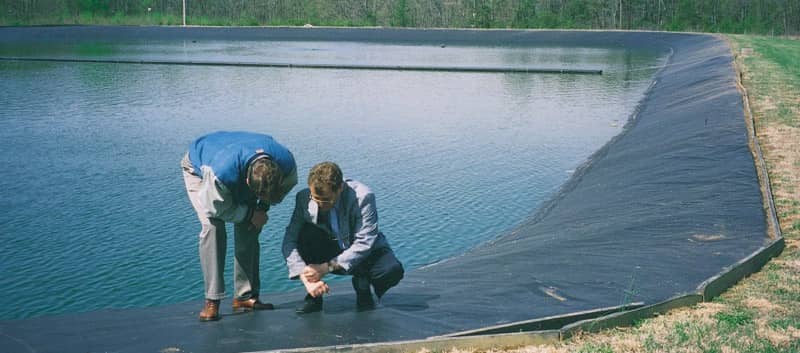
There are many uses of geomembrane liners. They can be used for floating baffles, secondary containment, wastewater impoundments, and more. It’s easy to bypass the important items and make blunders when selecting and specifying a geomembrane. Below are the five biggest mistakes in the selection process and how to avoid them:
1. Not Doing Thorough Research
For many engineers, specifying a geomembrane is only an occasional portion of a project and the tendency may be to just simply use a specification of what is considered a “standard” product, or a one-size-fits-all approach. Literature searches should be conducted, references of similar geomembrane applications should be contacted and manufacturers should be consulted to evaluate available options. Otherwise, only a portion of what is specifically needed, will be provided, or worse, the wrong features will be specified.
2. Writing or Using a Generic Spec
Sounds easy, but this is not the way to fit a solution to a problem. A generic spec will provide products that are the lowest common denominator, rather than the best solution to the project. You get what you specify.
3. Not Considering Long-Term Maintenance
OK, the geomembrane is installed and your job is finished, right? Wrong! Does the owner now have excessive maintenance because of high thermal expansion contraction of the material? How about slope failures because overburden was specified and it now is either unstable, or punctures occurred during placement? Long-term maintenance needs to be thoroughly evaluated during the specification process. It may be the overriding factor in geomembrane selection and specification.
4. Requiring a Warranty With an Arbitrary Time Requirement
While a longer “warranty” sounds good, the details are the issue. In conjunction with the long-term maintenance issue, a designer should evaluate what is needed in the warranty or else get a time warranty that is meaningless. Don’t fall into the generic spec trap; be specific about what is required.
5. Thinking Thicker is Better
When you go backpacking, no one wants a heavy, thick piece of equipment. You look for light composite products that accomplish the same function with less thickness, bulk, and weight. The same is true with geomembranes. Arbitrarily selecting and specifying a thickness probably will not get the best product for the project. High strength (think puncture and tensile) to thickness ratios are available with high-strength reinforced geomembranes.
Like any project component, a geomembrane is an engineered feature that requires adequate research and must be designed for the specific project. For detailed information about membrane properties, check out our document library.




